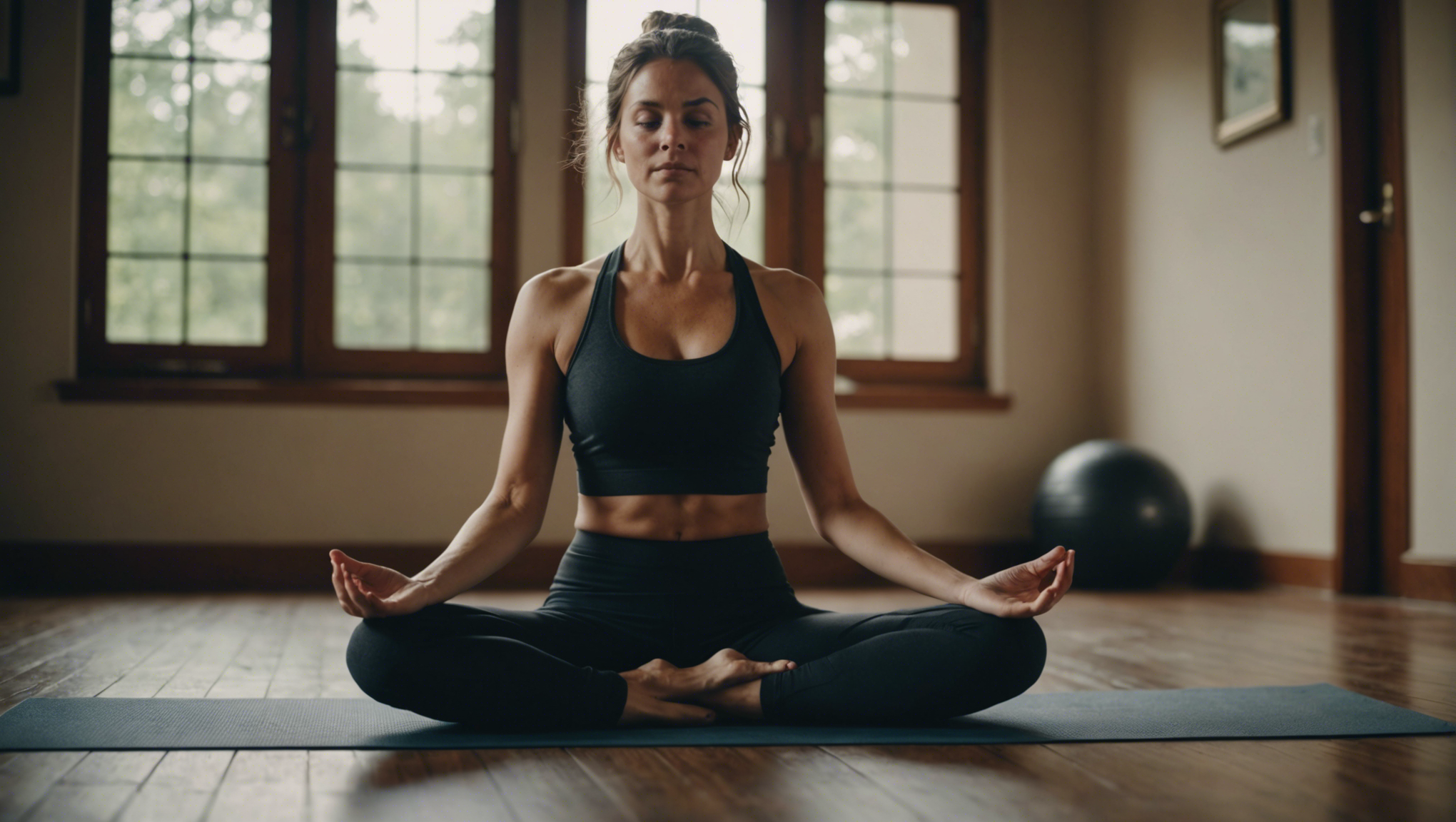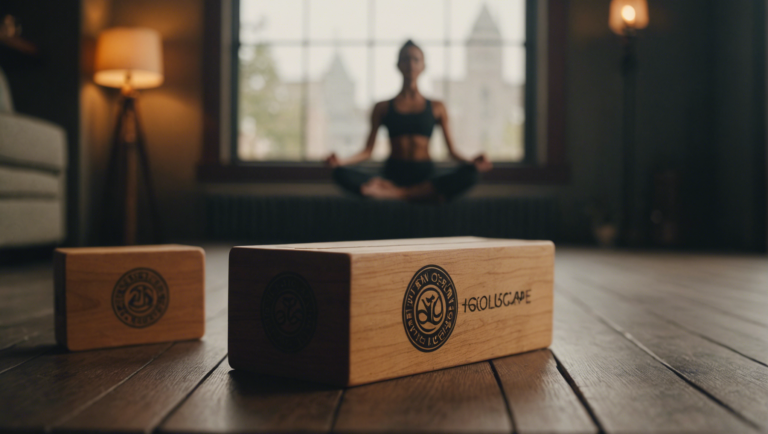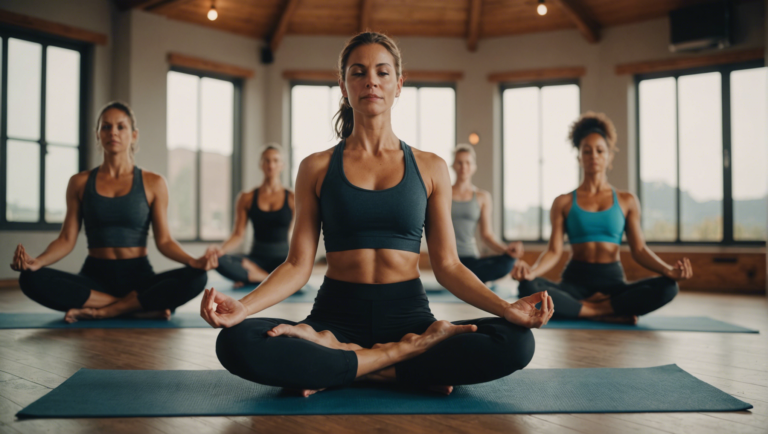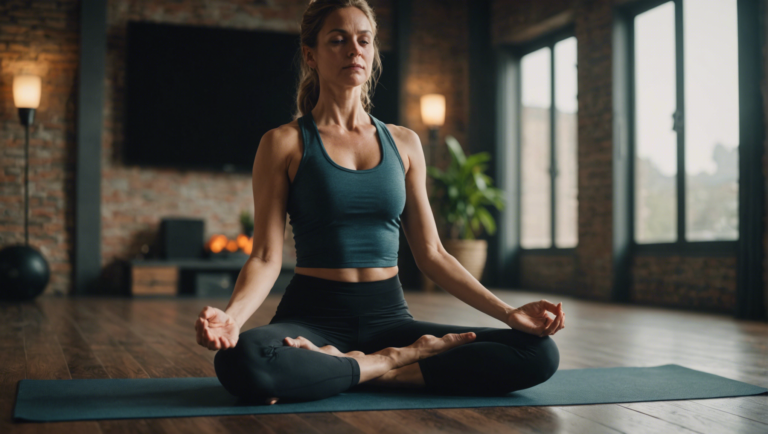Discovering The Best Yoga Practices For Beginners
Unveiling the Best Yoga Practices for Beginners: A Journey to Wellness
Embarking on the Path to Wellness: Essential Yoga Practices for Newcomers
Yoga, a practice steeped in thousands of years of history, offers a transformative journey not just for the body but for the mind and spirit. For those new to this ancient discipline, finding the best yoga practices tailored for beginners can be a pivotal step towards achieving wellness and balance. This guide delves into the cornerstone practices ideal for those embarking on their yoga journey, ensuring a solid foundation for a lifelong exploration of its benefits.
Crafting a Personal Yoga Routine: A Beginner’s Foundation
Establishing a personal yoga routine is vital for beginners. Not only does it cultivate discipline, but it also ensures that the practice becomes an integrated part of one’s daily life. Focusing on foundational poses, known as asanas, can help build strength, flexibility, and awareness. Key poses that form the bedrock of a beginner’s practice include the Mountain Pose (Tadasana), which teaches alignment; the Downward-Facing Dog (Adho Mukha Svanasana), essential for building strength; and the Warrior series, which focuses on stamina and stability.
The Significance of Breathwork in Yoga
Breathing is the essence of yoga, bridging the physical and mental facets of the practice. For newcomers, understanding and implementing breathwork (Pranayama) is transformative. Techniques such as the Ujjayi Breath, a slow diaphragmatic breathing, not only enhance concentration and endurance during yoga but also promote relaxation and stress reduction. breathwork from the onset of one’s yoga journey ensures a holistic approach, intertwining the physical with the mindful.
Integrating Mindfulness and Meditation
At its core, yoga is more than just physical poses; it’s a meditative practice fostering a deep connection between mind and body. For beginners, integrating mindfulness and meditation into yoga practice can unlock profound benefits, including enhanced focus, reduced anxiety, and a heightened sense of peace. Simple meditation techniques, such as focusing on the breath or engaging in guided visualizations, can significantly augment the yoga experience, making each session a step towards greater mental clarity and inner tranquility.
Emphasizing Consistency Over Perfection
One of the most crucial lessons for yoga beginners is the value of consistency. The pursuit of perfection, especially in replicating complex poses, can often lead to frustration or injury. For beginners, it’s essential to listen to one’s body, acknowledging its limits, and appreciating the gradual progress made with regular practice. Celebrating small victories and being patient with oneself fosters a more enjoyable and sustainable yoga journey.
Finding Community and Guidance
Embarking on a yoga practice as a beginner can feel daunting, but one doesn’t have to do it alone. Seeking out a community, whether in local classes or online groups, can provide invaluable support and motivation. Additionally, working with a knowledgeable instructor can offer personalized guidance, ensuring that poses are performed safely and effectively. This support network not only enriches the learning experience but also helps in cultivating a deeper connection to the yoga community at large.
Yoga offers a timeless path to physical health, mental clarity, and spiritual depth. For beginners, slowly building a practice grounded in the basics of poses, breathwork, and meditation ensures a solid foundation from which to grow. Remember, the journey of yoga is a personal one, marked not by the perfection of poses but by the transformation they facilitate within. As you embark on this path, embrace each step with curiosity, patience, and an open heart, leading to an enriching quest towards wellness and self-discovery.
Essential Gear and Spaces: Preparing for Your First Yoga Session
Selecting The Right Yoga Mat
Embarking on your yoga journey begins with one fundamental piece of gear: the yoga mat. This isn’t just about aesthetics but functionality and comfort. A good quality yoga mat provides the grip needed to maintain poses without slipping, adequate cushioning to protect your joints, and can significantly enhance your practice, making it a worthy investment. When choosing a mat, consider the material, thickness, and texture. Eco-friendly options such as natural rubber or jute are not only kind to the planet but often provide superior grip and durability. Thickness is a personal preference, though a mat too thin might hinder comfort, especially on hard floors, while one too thick can affect balance. The texture affects grip, so it’s wise to choose according to the intensity of your yoga practice.
Wear Comfortable, Flexible Clothing
Yoga is an intimate dance between body and breath, demanding attire that moves with you without restriction. Prioritize comfort and flexibility when selecting your yoga wear. This doesn’t necessarily mean investing in high-end yoga brands immediately but finding clothes that allow full range of motion. Look for breathable, moisture-wicking fabrics to keep you cool and comfortable. Avoid very loose clothing that might get in your way or too tight apparel that restricts movement. A secure, snug fit that allows you to view your alignment and adjustments is key.
Create a Dedicated Space for Practice
The significance of a serene, welcoming space for your yoga practice cannot be overstated. Whether it’s a corner of your living room or a dedicated room, ensure the area is clean, clutter-free, and quiet. This space should inspire peace and concentration, allowing you to focus inwardly without distraction. Adding personal elements like plants, candles, or calming artwork can enhance the atmosphere, making your practice more enjoyable and meaningful. Natural light and good ventilation can also elevate your experience, creating an environment that encourages relaxation and mindfulness.
Understanding the Importance of Accessories
While not strictly necessary, certain yoga accessories can support and deepen your practice, especially as a beginner. Yoga blocks and straps are excellent tools for enhancing flexibility and alignment, making challenging poses more accessible. A yoga bolster or cushion can provide extra support during meditation or more restorative poses. Initially, feel free to use household items as substitutes, such as books for blocks or a belt for a strap. As your practice evolves, you might find specific accessories that suit your needs and preferences.
Start with the Basics
At the heart of preparing for your first yoga session is understanding and embracing the basics. This includes familiarizing yourself with foundational poses, breathing techniques, and the philosophy behind the practice. Starting with a beginner class or online tutorials led by certified instructors can help build your confidence and knowledge. Remember, yoga is a personal journey, and there’s no rush to advance. Honor your body’s limits, focusing on form and breath over perfection. Over time, you will notice improvements in flexibility, strength, and overall well-being.
Nourish Yourself Appropriately
Just as important as the physical preparation for yoga is how you nourish your body. Eating a light, nutritious snack an hour before practice can provide the energy needed without discomfort. Hydrate well, but avoid large amounts of water right before class to prevent any uneasiness during poses. Post-practice, choose meals that are replenishing and balanced. Listening to your body’s needs, in terms of both nutrition and rest, is crucial in supporting a healthy and sustainable yoga practice.
As you embark on this enriching journey, remember that the essence of yoga is not in the perfection of poses but in the practice itself. Preparing your space, gear, and mind is just the beginning. With patience, persistence, and the right approach, your yoga practice can become a source of strength, peace, and deep fulfillment.
Understanding the Fundamental Poses: A Guide for Novice Yogis
Embarking on a yoga journey unveils a realm of serenity, strength, and self-awareness, particularly when emphasis is placed on understanding the foundational poses at the outset. The essence of yoga transcends mere physical activity; it harmonizes the body, mind, and spirit. For novice yogis, mastering these fundamental poses is not only essential for safety and alignment but also for cultivating a deeper connection to their practice. This guide is designed to demystify these foundational poses, offering a detailed exploration that beginners can rely on.
The Importance of Proper Alignment
Proper alignment in yoga is paramount. It ensures that every pose is executed safely, reducing the risk of injury and enabling the body to reap the full benefits of each practice. For beginners, understanding the nuances of alignment is particularly crucial, as it forms the bedrock upon which a sustainable practice is built. By focusing on alignment, novices learn to listen to their bodies, recognizing the difference between a beneficial stretch and discomfort signaling the need for adjustment.
The Power of Breathwork
Central to the practice of yoga is pranayama, or breath control. Throughout the exploration of foundational poses, maintaining a steady, rhythmic breath is essential. Breathwork not only enhances concentration and mental clarity but also increases the efficiency of movements and the depth of poses. Beginners are encouraged to develop a mindful breathing practice alongside their physical poses, integrating the breath as an integral component of each yoga asana.
Mountain Pose (Tadasana)
A seemingly simple stance, Tadasana is the foundation of all standing poses in yoga. It teaches the practitioner how to root into the earth with their feet while reaching upwards with the crown of their head, establishing a sense of balance and groundedness. This pose nurtures posture awareness and alignment, serving as a crucial starting point for beginners to understand the grounding principles of yoga practice.
Downward-Facing Dog (Adho Mukha Svanasana)
Adho Mukha Svanasana is not merely a transitional pose but a vital asana that stretches and strengthens the entire body. It offers beginners an excellent opportunity to work on their flexibility, particularly in the hamstrings, shoulders, and hands. Correcting common misalignments in this pose, such as ensuring even weight distribution between the hands and feet, primes beginners for more advanced practices.
Warrior Poses (Virabhadrasana I, II, and III)
The Warrior poses, ranging from I to III, are iconic in yoga for their strength-building benefits. They teach balance, focus, and the importance of integrating breath with movement. For beginners, starting with Virabhadrasana I and progressing through to III provides a structured way to build strength, confidence, and an understanding of dynamic balance in yoga.
Child’s Pose (Balasana)
As a restorative posture, Balasana is integral to any practice, offering a gentle stretch to the back and hips while providing a moment of introspection and rest. For beginners, it serves as a safe haven to return to at any point during their practice, highlighting the nurturing and non-competitive nature of yoga.
The Journey Begins
Embarking on the path of yoga is a transformative journey of continuous learning and personal growth. By focusing on the foundational poses, beginners lay down the groundwork for a practice that is not only physically rewarding but also emotionally and spiritually enriching. With patience, persistence, and mindful attention to alignment and breath, novice yogis can build a practice that supports their well-being for years to come.
Engagement in a yoga practice is akin to sowing seeds in a fertile garden; with careful tending, dedication, and a willingness to grow, the results can be profoundly life-affirming. As beginners venture into the world of yoga, equipped with an understanding of these fundamental poses, they unlock the potential for a deeply satisfying journey towards inner harmony and outer strength.
Breathing Techniques and Their Role in Enhancing Yoga Practice
Breathing is the essence of life and the cornerstone of a productive yoga practice. It is the bridge connecting the mind and body, facilitating a deeper understanding and mastery over both. The art of controlling one’s breath brings about a remarkable transformation in one’s yoga journey, enhancing the benefits of each posture and meditation session. Through this article, we delve into the powerful role of breathing techniques in elevating one’s yoga practice, offering insights that promise to enrich both novices and seasoned practitioners alike.
The Foundation of Yoga: Understanding Pranayama
Breathing techniques, or Pranayama, lie at the heart of yoga. This ancient Sanskrit term translates to "extension of the prāṇa (breath or life force)" or "breath control." Pranayama practices are designed to foster a conscious awareness of one’s breathing, aiming to strengthen the connection between the mind, body, and spirit. These techniques vary from gentle to invigorating and can be used to calm the mind, increase focus, and energize the body.
Energizing Your Practice: The Benefits of Controlled Breathing
The benefits of integrating controlled breathing into your yoga routine are multifaceted. Firstly, it improves concentration and focus, enabling practitioners to delve deeper into each pose and meditation. Secondly, mastering breath control can significantly increase lung capacity and efficiency, enhancing overall physical performance and wellbeing. Furthermore, it plays a crucial role in stress reduction, as slow, deliberate breathing induces a state of calmness and relaxation, counteracting the effects of anxiety and tension.
Mastering the Basics: Techniques for Beginners
For beginners, mastering a few fundamental breathing techniques can be a game changer in their yoga practice. Ujjayi Pranayama, or Victorious Breath, is a cornerstone technique that involves breathing deeply through the nose with a slight constriction in the back of the throat. This method fosters a meditative state, aiding in concentration and maintaining a rhythmic flow during practice. Another essential technique is Dirga Pranayama, or Three-Part Breath, which teaches practitioners to breathe deeply into three parts of the abdomen, facilitating a profound sense of relaxation and stress relief.
Enhancing Meditation with Breath Awareness
Breath awareness is integral to deepening meditation practices. Techniques such as Anulom Vilom, or Alternate Nostril Breathing, help to balance the left and right hemispheres of the brain, fostering a state of equanimity and heightened mental clarity. Similarly, practicing Bhramari Pranayama, or Bee Breath, can alleviate stress and cerebral tension, preparing the mind for deeper meditation and reflection.
Cultivating a Mindful Practice: Tips for Integration
Successfully integrating breathing techniques into your yoga practice requires mindfulness and consistency. Begin each session with a few minutes dedicated to breathing exercises, setting a calm and centered tone for your practice. Pay attention to the natural rhythm of your breath during various postures, ensuring that you’re not holding your breath but rather using it to deepen each pose. Experiment with different techniques to discover what best suits your needs and preferences, remembering that the goal is to foster a harmonious balance between movement and breath.
Breathing is not merely an involuntary act of survival but a profound tool for transformation and growth in the realm of yoga. By mastering the art of breath control through Pranayama, practitioners can unlock higher levels of awareness, mental clarity, and physical vitality. This journey of discovery does not end with perfecting a few techniques; it’s a lifelong path of exploration, bringing you closer to the essence of your being with each breath. Whether you are standing on your mat for the first time or seeking to deepen an established practice, the power of breath is an unparalleled ally in your quest for balance, peace, and inner strength.
Embracing the Yoga Lifestyle: Beyond the Mat
The transformative power of yoga extends far beyond the physical postures (asanas) practiced on the mat. For many, yoga is not just an exercise but a comprehensive lifestyle that encompasses a philosophy of living in harmony with oneself and the world. This lifestyle promotes balance, health, and inner peace, touching on all aspects of life from diet to thought patterns. Understanding and embracing this holistic approach can significantly enhance the quality of life, promoting well-being on a physical, mental, and spiritual level.
Deepening Your Practice with Mindful Breathing
Breathing is central to yoga, with Pranayama (breath control) practices designed to master the life force (Prana) within. Off the mat, mindful breathing can be a powerful tool to navigate stress, enhance concentration, and maintain emotional balance. Integrating deep, conscious breathing into your daily routine can transform mundane tasks into moments of mindfulness, helping you stay centered and calm in the face of life’s challenges.
Nourishing the Body with a Sattvic Diet
The concept of Ahimsa (non-violence) in yoga extends to the dietary choices that promote a Sattvic (pure) lifestyle. Embracing a diet rich in whole, unprocessed foods not only supports physical health but also contributes to mental clarity and emotional stability. Such a diet emphasizes fruits, vegetables, whole grains, nuts, seeds, and legumes, with a focus on food that nourishes the body and mind while minimizing harm to other beings and the environment.
Cultivating Positive Relationships
Yoga teaches the importance of positive relationships and community. The practice of yoga encourages compassion, empathy, and understanding, fostering connections that are rooted in mutual respect and mindfulness. Whether it’s through supportive yoga communities or applying yogic principles in interactions with others, nurturing positive relationships is pivotal in living a balanced and harmonious life.
Living with Intention and Mindfulness
Yoga encourages living each moment with full awareness and intention. This means making conscious choices that align with your values and aspirations, whether it’s in your career, personal life, or interactions with the natural world. Embracing mindfulness in everyday activities can transform routine into ritual, imbuing the ordinary with a sense of the sacred.
Embracing the Power of Meditation
Meditation, like yoga, is a practice that transcends the time spent in formal sitting. It’s a state of being, of continuous flow and connection with the present moment. Integrating meditative awareness into daily life helps in developing a peaceful mind, promoting resilience against stress and adversity. This could be as simple as performing daily tasks with full attention or setting aside moments for quiet reflection.
Engaging with Self-Study and Continuous Learning
The practice of Svadhyaya, or self-study, encourages a lifelong commitment to learning and personal growth. Engaging with the vast literature on yoga philosophy, exploring different aspects of the practice, and remaining open to new ideas can enrich your understanding and experience of the world. This pursuit of knowledge and self-awareness fosters a deep, inner transformation that is at the heart of the yogic lifestyle.
Sustainability and Conscious Living
The principles of yoga advocate for living in harmony with nature, encouraging sustainability and conscious choices that reduce harm to the environment. This can manifest in various forms, from minimizing waste to choosing eco-friendly products, and supports a holistic approach to wellness that includes the health of the planet.
Embracing the yoga lifestyle offers a path to holistic health and profound personal transformation. It’s an invitation to live more consciously, with greater harmony and connection to the world. By extending the principles of yoga beyond the mat, we open ourselves to a more meaningful, balanced, and joyful existence.
Conclusion
Embarking on the path of yoga opens doors to self-discovery, wellness, and a deeper connection with one’s own body and mind. Starting with an insight into the realms of yoga practices tailored for beginners, the journey encapsulates a comprehensive approach to wellness that stretches beyond physical boundaries to touch spiritual and mental well-being. From the reasons that draw individuals to yoga to the transformative experiences it promises, the narrative extends an invitation to embrace a holistic lifestyle change. The exploration into the best yoga practices for beginners does not merely dwell on the postures but delves into the essence of starting a yoga journey, illuminating the path for those at the threshold of this enriching endeavor.
Preparing for the first yoga session encompasses more than selecting the right mat or finding an aesthetically pleasing space. It’s about cultivating an environment that resonates with tranquility and readiness, both externally and internally. The guidance provided on choosing essential gear and creating a serene space serves as a foundational step, ensuring that novices step onto their mats with confidence and comfort. This segment not merely addresses the tangible aspects of beginning yoga but also touches on the importance of mental preparedness, setting a tone for a practice rooted in mindfulness and presence.
Understanding the fundamental poses acts as the backbone of any yoga practice, offering beginners a solid ground to build upon. With insights into how each pose contributes to physical health, mental clarity, and emotional balance, the guide becomes an invaluable resource for anyone stepping into yoga with aspirations to grow and evolve. The simplification of complex yoga terminology and the demystification of common poses empower beginners to approach their practice with knowledge and respect for their body’s limits and potential.
The exploration of breathing techniques underlines their indispensable role in enhancing the yoga experience. Highlighting the symbiotic relationship between breath and movement directs attention to the subtleties of yoga that transform it from a mere physical exercise to a deeply meditative practice. Through breathing, beginners learn to navigate their practice with grace and fluidity, fostering a sense of calm that transcends the yoga mat and permeates everyday life.
Embracing the yoga lifestyle extends an invitation to incorporate the principles and practices of yoga beyond the mat. It encourages beginners to imbibe the essence of yoga into their daily lives, from mindfulness in actions to serenity in thoughts. This segment not only rounds off the guide but opens a gateway to viewing yoga as a lifelong companion, with its principles guiding one through the ebbs and flows of life.
The journey through unveiling the best yoga practices for beginners, preparing for the first session, understanding essential poses, mastering breathing techniques, and finally, embracing the yoga lifestyle outlines a comprehensive blueprint for embarking on a fulfilling yoga path. It accentuates the importance of patience, persistence, and mindfulness as beginners navigate their yoga journey, offering insights and guidance to foster a practice that is as enriching as it is enlightening. With each step, the narrative enfolds layers of knowledge and wisdom, equipping novice yogis with the tools and understanding needed to cultivate a deeply personal and transformative yoga practice. Through this exploration, beginners are not only instructed but inspired to delve into yoga with an open heart and mind, setting the stage for a journey that promises wellness, balance, and transcendence.



